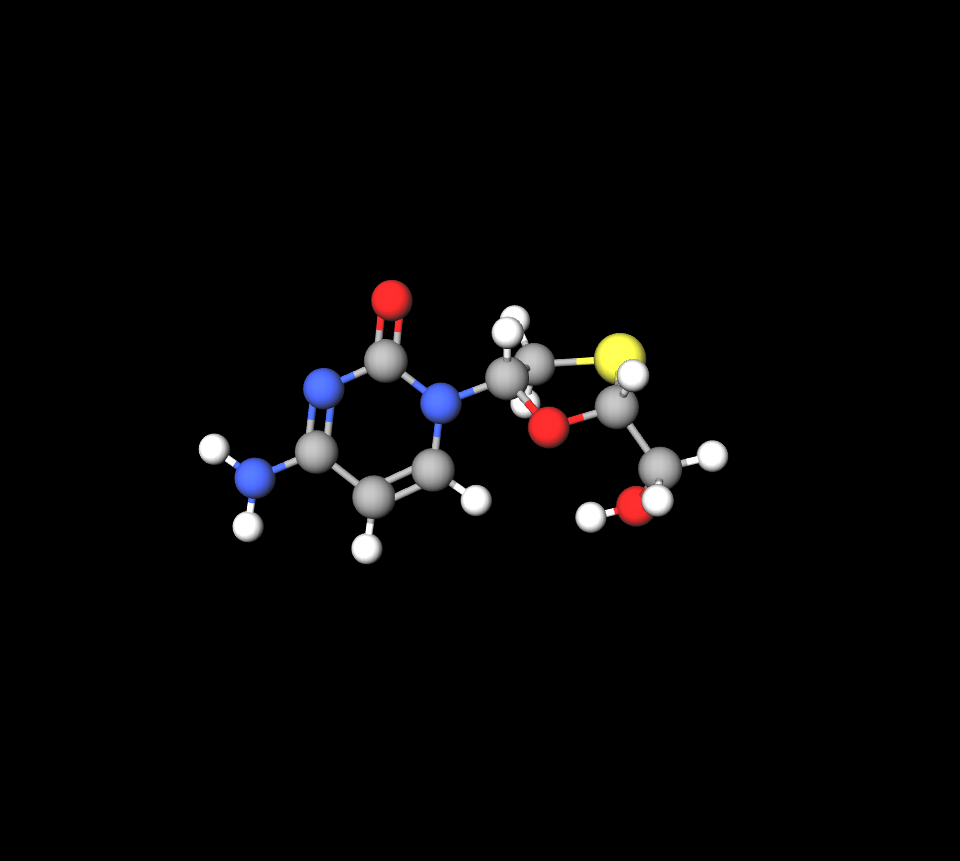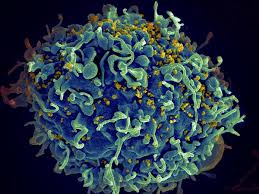Hepitec, Lamivudine
- Introduction to Hepitec (Lamivudine)
- Composition of Hepitec (Lamivudine)
- Lamivudine uses
- Off-Label Uses of Lamivudine
- How Hepitec (Lamivudine) Works
- Dosage and Administration
- Administration to Special Populations
- Contraindications
- Lamivudine side effects
- Drug Interactions
- Overdose Management
- Handling and Storage Instructions
- Handling Precautions
Introduction to Hepitec (Lamivudine)
Hepitec, containing the active ingredient Lamivudine, is a potent antiviral medication primarily used to manage chronic hepatitis B (HBV) and as part of antiretroviral therapy (ART) for HIV infections. Lamivudine's unique mechanism of action offers essential intervention in halting viral replication. Initially developed in the 1990s, it gained FDA approval and continues to be a pivotal choice in chronic HBV and HIV management due to its efficacy and safety profile.
Lamivudine's role in treating hepatitis B and HIV underscores its significance in reducing disease progression, limiting liver damage, and controlling viral loads, ultimately enhancing patient outcomes and quality of life.
Composition of Hepitec (Lamivudine)
Hepitec's primary component is Lamivudine, a nucleoside analog. The formulation includes:
Active ingredient:
Lamivudine is designed to inhibit viral DNA synthesis.

Formulations:
Available in various concentrations to meet treatment needs, often in tablet or oral solution form.
Inactive ingredients:
Excipients that ensure stability, bioavailability, and ease of administration.
Hepitec's availability in tablets and liquid solutions provides flexibility, especially for pediatric and elderly patients requiring specific dosing forms.
Abacavir lamivudine
Abacavir lamivudine is often prescribed alongside medications for HIV to manage the infection effectively by reducing the levels of HIV in the body thereby boosting the systems functionality.
Dolutegravir and lamivudine
Dolutegravir and lamivudine are designed to prevent HIV from multiplying by targeting two stages of the virus replication process.
Lamivudine uses
Hepitec's primary indications include:
Chronic Hepatitis B:
Reducing viral load and liver inflammation, lowering the risk of cirrhosis and liver cancer.
HIV Management:
Integral in combination with antiretroviral therapy (ART), working synergistically with other agents to control viral replication and delay disease progression.
Its mechanism involves disrupting the virus' replication cycle, a critical feature that makes Hepitec invaluable in long-term disease management.

Off-Label Uses of Lamivudine
Lamivudine, though primarily prescribed for HBV and HIV, has emerging off-label applications:
Other Viral Infections:
Ongoing research investigates its efficacy in combating additional viral pathogens.
HIV Pre-exposure Prophylaxis (PrEP):
In combination therapies for individuals at high risk.
Autoimmune Hepatitis:
Potential benefits in autoimmune hepatitis management, although not conclusively established.
These investigational uses highlight Lamivudine's versatility and potential across broader therapeutic contexts.

How Hepitec (Lamivudine) Works
- It mimics the natural substrates of viral DNA, integrating into the viral genome and blocking further synthesis.
- This action prevents virus proliferation, providing prolonged effectiveness with regular dosing.
The duration of effect is sustained with consistent therapy, significantly controlling viral loads over the long term.
Dosage and Administration
Standard dosing recommendations ensure optimal efficacy:
For Hepatitis B:
One dose per day is customized based on the patient's weight and kidney function.
HIV Therapy:
When used alongside medications it improves its effectiveness in treatment.
Renal Impairment Adjustments:
Dosages are adjusted according to the levels of creatinine clearance.
Missed Doses:
Patients should make sure to take the missed dose as they can unless its almost time, for their next dose as scheduled. It's crucial to stick to a dosing regimen to ensure effectiveness since irregular dosing could result in the development of resistance.
Administration to Special Populations
Administration to the Elderly
Elderly individuals may require dosage adjustments to accommodate the decline in function associated with aging. It is advisable to conduct assessments of kidney function to customize the treatment accordingly.

Administration to Pregnant Women and Nursing Mothers
During pregnancy and breastfeeding periods, it's important to consider the use of Lamivudine, as the benefits need to be balanced with the risks involved in order to ensure the well-being of both the mother and child.
Administration to Children
Pediatric approval ensures dosing tailored to weight and age factors for young patients who may exhibit distinct side effects requiring vigilant observation.
Contraindications
Hepitec is contraindicated in specific scenarios:
- Patients with known hypersensitivity to Lamivudine or any excipient in the formulation.
- In cases where drug interactions pose significant risks, such as with certain antiretroviral agents or drugs that increase lactic acidosis risk.
Contraindications help identify patients for whom Hepitec may present more risks than benefits.
Lamivudine side effects
Common Side Effects
Hepitec, like many medications, can produce a range of common side effects, which typically subside as the body adjusts to the treatment. The most frequently reported adverse effects include:
- Nausea: A sensation of queasiness that may occur shortly after taking the medication.
- Headache: Often mild but persistent headaches can occur in some users.
- Fatigue and Malaise: General feelings of tiredness or discomfort are noted in some patients.
- Gastrointestinal Discomfort: Symptoms such as bloating, mild abdominal pain, or dyspepsia.
- Musculoskeletal Pain: Mild joint or muscle aches, which can vary in intensity.
These common side effects are generally manageable and can often be mitigated through lifestyle adjustments or, if needed, minor medical interventions. Patients experiencing persistent discomfort should consult a healthcare provider.
Serious Side Effects
In rare cases, Hepitec may lead to more severe adverse reactions that necessitate immediate medical attention:
- Lactic Acidosis and Severe Hepatomegaly: A potentially life-threatening buildup of lactic acid in the body, often presenting with symptoms like rapid breathing, weakness, and nausea. Severe liver enlargement, or hepatomegaly, may accompany this condition.
- Pancreatitis: Particularly a concern in pediatric patients, pancreatitis can cause severe abdominal pain, nausea, and vomiting. It is critical to monitor younger patients closely for early signs.
- Severe Allergic Reactions: Symptoms such as swelling, difficulty breathing, or a rapid onset of skin rashes may indicate a serious allergic response.
If any of these serious side effects are observed, immediate medical assistance is advised, as they can lead to significant health complications if untreated.

Drug Interactions
Some products that may interact with this drug are: orlistat, sorbitol. Emtricitabine is similar to lamivudine and should not be taken with this medication. Check the labels on all your HIV medicines because they may contain the same ingredients as found in this product.
Caution is advised when Lamivudine is combined with similar antiretroviral medications, as this can intensify side effects or diminish therapeutic efficacy.
Interferon or Ribavirin:
Interferon or Ribavirin, commonly prescribed for infections, can potentially interact with Lamivudine. This can result in a higher chance of side effects or a decrease in the effectiveness of controlling the virus.
Over-the-Counter Medications and Supplements:
Patients should make sure to share information, about all the medications and supplements they are using because even, over the counter products can affect how Lamivudine works. Before beginning any medication or supplement it is important to consult with healthcare professionals to confirm that there are no interactions, with Hepiteclific care providers should be consulted before starting any new medication or supplement to ensure there are no harmful interactions, with Hepitecre.
Overdose Management
Signs and Symptoms of Lamivudine Overdose
Overdose of Lamivudine may lead to amplified side effects and, in severe cases, may result in toxicity. Common symptoms indicating an overdose can include:
- Pronounced nausea and vomiting
- Severe fatigue or confusion
- Difficulty breathing or unusual weakness
Immediate Steps to Take if Overdose is Suspected
In the event of a suspected overdose, the following actions are recommended:
- Cease taking the medication immediately.
- Seek prompt medical assistance.
- Provide information on the amount ingested and timing to healthcare professionals.
Supportive Care and Potential Use of Dialysis
In managing an overdose of Lamivudine, for patients in need of treatment, with dialysis to eliminate the surplus medication from the body when symptoms and blood test outcomes are assessed by staff.
Importance of Contacting Emergency Services
It is crucial to get in touch with emergency services in cases of overdose, as prompt action greatly enhances the chances of positive outcomes. The individuals and those taking care of them should respond swiftly upon noticing any signs of overdose.
Handling and Storage Instructions
Proper Storage Conditions for Optimal Drug Stability
To maintain the efficacy and safety of Hepitec, the medication must be stored under specific conditions:
- Temperature: Store at room temperature, avoiding exposure to high heat or freezing conditions.
- Humidity: Store in a dry place; avoid moisture-rich areas such as bathrooms.
Safe Handling Practices to Avoid Contamination
To keep the medication pure and safe for consumption, hands must be clean and dry when touching tablets or opening solutions.
Guidelines for Disposal of Expired or Unused Medication
Follow local regulations to dispose of any unused Hepitecis to avoid accidental ingestion or harm to the environment. You can return them to pharmacies through their take-back programs.
Handling Precautions
Recommendations for Caregivers Handling the Drug for Others
Caregivers administering Hepitec should take precautions, especially when dealing with liquid forms of the medication:
- Use gloves if there is direct skin contact with the medication.
- Wash hands thoroughly after handling.
Safe Practices to Prevent Accidental Exposure
Storing medication safely out of childrens or pets' reach can help reduce exposure incidents, especially when utilizing child packaging if possible.
Protective Measures for People Handling Liquid Formulations
When dealing with solutions or mixtures it's important to prevent spills and quickly address them. Opt for a dropper or a measuring device, for dosing to lower the chances of exposure or taking too much.
Hepitec, Lamivudine FAQ
- Why we use lamivudine?
- Why lamivudine is used?
- Why lamivudine is called 3tc?
- Who uses lamivudine?
- Which drug is lamivudine?
- When to take lamivudine tablets?
- Lamivudine what does it do?
- Lamivudine what are they for?
- What lamivudine means?
- What lamivudine does?
- What lamivudine is used for?
- How does lamivudine enter the cell?
- Lamivudine how does it work?
- How lamivudine works?
- Can lamivudine cure hiv?
- Can lamivudine cure hepatitis c?
- Can lamivudine be used as pep?
- Can lamivudine be used as prep?
- Can lamivudine cure hepatitis b?
- Can lamivudine prevent hiv?
- What are lamivudine tablets for?
- Why we use lamivudine?
- Why lamivudine is used?
- Why lamivudine is called 3tc?
- Who uses lamivudine?
- Which drug is lamivudine?
- When to take lamivudine tablets?
- What lamivudine does?
- What lamivudine is used for?
- How does lamivudine enter the cell?
- Lamivudine how does it work?
- How lamivudine works?
- Can lamivudine cure hiv?
- Can lamivudine cure hepatitis c?
- Can lamivudine be used as pep?
- Can lamivudine be used as prep?
- Can lamivudine cure hepatitis b?
- Can lamivudine prevent hiv?
- What are lamivudine tablets for?
- Why we use lamivudine?
- Why lamivudine is used?
- When to take lamivudine tablets?
- What lamivudine means?
- What lamivudine does?
- How does lamivudine enter the cell?
- Lamivudine how does it work?
- How lamivudine works?
- Can lamivudine cure hiv?
- Can lamivudine be used as pep?
- Can lamivudine be used as prep?
- Can lamivudine cure hepatitis b?
- Can lamivudine prevent hiv?
- What are lamivudine tablets for?
- Why we use lamivudine?
- Why lamivudine is used?
- Who uses lamivudine?
- Which drug is lamivudine?
- When to take lamivudine tablets?
- Lamivudine what does it do?
- Lamivudine what are they for?
- What lamivudine means?
- What lamivudine does?
- What lamivudine is used for?
- How does lamivudine enter the cell?
- Lamivudine how does it work?
- How lamivudine works?
- Can lamivudine cure hiv?
- Can lamivudine cure hepatitis c?
- Can lamivudine be used as pep?
- Can lamivudine be used as prep?
- Can lamivudine cure hepatitis b?
- Can lamivudine prevent hiv?
- What are lamivudine tablets for?
- What are lamivudine tablets for?
Why we use lamivudine?
Treatment for combating human immunodeficiency virus type 1 (HIIV-1) and for managing hepatitis B virus (HBV).
Why lamivudine is used?
Epivir, also known as Lamivudine, is prescribed in combination with drugs to manage HIV infection in adults and children aged 3 months and above.
Why lamivudine is called 3tc?
3TC is a three-character abbreviation for the medication's chemical structure, 2',3'-dideoxy-3'-thiacytidine
Who uses lamivudine?
Doctors often prescribe Lamivudine along, with medications to treat infections caused by the human immunodeficiency virus ( HIV ).
Which drug is lamivudine?
Epivir, which contains Lamivudine, is prescribed in combination with drugs to manage HIV infection in both adults and children aged 3 months and above, while Epivir HBV, also containing Lamivudine, is specifically used for treating hepatitis B infection.
When to take lamivudine tablets?
Typically, Lamivudine (Epivir) is ingested either once or twice daily, with or without food.
Lamivudine what does it do?
Antiviral therapy for human immunodeficiency virus type containing medications (also used alone for treating hepatitis B virus).
Lamivudine what are they for?
Antiviral therapy is used for treating human immunodeficiency virus type HIV-1 As a treatment for hepatitis B virus HBV
What lamivudine means?
To treat human immunodeficiency virus type 2 (HDIV), Lamivudine, a prescription nucleoside reverse transcriptase inhibitor (INRI), is prescribed in combination with medications. It is also used alone to treat hepatitis C virus (HEPC).
What lamivudine does?
It functions by reducing the levels of HIV and hepatitis B in the bloodstream.
What lamivudine is used for?
Antiviral therapy, for HIV type 2. As a treatment, for hepatitis B.
How does lamivudine enter the cell?
Lamivudine can infiltrate cells through either diffusion or active transport.
Lamivudine how does it work?
It functions by reducing the levels of HIV and hepatitis B in the bloodstream.
How lamivudine works?
It functions by reducing the levels of HIV and hepatitis B in the bloodstream.
Can lamivudine cure hiv?
Taking Lamivudine does not eliminate HIV infection completely. To reduce the chances of passing on the virus to others be sure to follow your doctor's instructions when taking all your HIV medications.
Can lamivudine cure hepatitis c?
No
Can lamivudine be used as pep?
After exposure, it's advisable to use a three-medication mix for exposure prophylaxis (PEV). While Lamivudine is a component, it's typically paired with two medications for optimal effectiveness, per the WHO's recommendation. Lamivudine, dolutegravir and tenofovir.
Can lamivudine be used as prep?
Before exposure, lamivudine may be utilized with tenofovir disoproxil for pre-exposure prophylaxis (PrEP).
Can lamivudine cure hepatitis b?
Lamivudine HBV is prescribed for hepatitis B treatment. It does not serve as a cure for the disease or stop the transmission of hepatitis B to others.
Can lamivudine prevent hiv?
The combination of lamivudine and zidovudine does not prevent HIV infection or AIDS symptoms. Rather works to inhibit the replication of HIV and seems to delay the deterioration of the immune system.
What are lamivudine tablets for?
Epivir HBV, also known as Lamivudine, is prescribed for the treatment of hepatitis B infection. It is part of a group of drugs called nucleoside reverse transcriptase inhibitors (or simply NRTIs). Its mechanism involves reducing the levels of HIV and hepatitis B virus in the bloodstream.
Why we use lamivudine?
Antiviral therapy is used to treat human immunodeficiency virus type 1 ( HIV-1 ) as the treatment for hepatitis B virus ( HBV ).
Why lamivudine is used?
Epivir, also known as Lamivudine, is prescribed in combination with drugs to manage HIV infection in adults and children aged 3 months and above.
Why lamivudine is called 3tc?
The drug Lamivudine is commonly referred to as 2' 2' or 2' for short due to its chemical structure, which is known as 2' 23' thymidine.
Who uses lamivudine?
In treating the infection triggered by the human immunodeficiency virus (HIV) Lamivudine is typically combined with medications.
Which drug is lamivudine?
Epivir, also known as Lamivudine, is prescribed in combination with drugs for managing HIV infection in adults and children aged 3 months and above, while Epivir HBV is utilized for treating hepatitis B infection in patients.
When to take lamivudine tablets?
Typically, Lamivudine (brand name Epivir) is taken once or twice daily with or without meals.
What lamivudine does?
It functions by reducing the levels of HIV and hepatitis B in the bloodstream.
What lamivudine is used for?
Antiviral therapy is used for treating human immunodeficiency virus type-1 (HIV-1) It can also be used alone for hepatitis B virus treatment.
How does lamivudine enter the cell?
Upon entering cells, Lamivudine can passively. Be actively transported across cell membranes.
Lamivudine how does it work?
It functions by reducing the levels of HIV and hepatitis B in the bloodstream.
How lamivudine works?
It functions by reducing the levels of HIV and hepatitis B in the bloodstream.
Can lamivudine cure hiv?
Remember that Lamivudine alone cannot cure HIV infection; it's crucial to follow your doctor's instructions precisely to lower the chances of transmitting the virus to others.
Can lamivudine cure hepatitis c?
No
Can lamivudine be used as pep?
In exposure prophylaxis (PEPx it is recommended to take a three-medication combination, with lamivudine being a common component that needs to be supplemented with two other medications for effectiveness WHO guidelines suggest the use of lamivudine in conjunction with dolutegravir and tenofovir.
Can lamivudine be used as prep?
Lamivudine is effective for exposure prophylaxis (PrEP) when paired with tenofovir disoproxil fumarate.
Can lamivudine cure hepatitis b?
The medication Lamivudine HBV is prescribed for treating hepatitis B infection. It does not serve as a cure for the condition, nor can it stop the transmission of hepatitis B to other individuals.
Can lamivudine prevent hiv?
Combining lamivudine and zidovudine does not cure or prevent HIV infection or AIDS symptoms; instead, it works to inhibit HIV replication. It seems to delay the deterioration of the system.
What are lamivudine tablets for?
Epivir HBV, also known as Lamivudine, is prescribed for treating hepatitis B infections. It belongs to a group of drugs called nucleoside reverse transcriptase inhibitors (known as "NRTIs"). Its mechanism of action involves reducing the levels of both HIV and hepatitis B viruses in the bloodstream.
Why we use lamivudine?
Antiviral therapy for human immunodeficiency virus type-1 ( HIV-1 ). As a treatment for hepatitis B virus ( HBV ).
Why lamivudine is used?
Epivir, also known as Lamivudine is prescribed in combination, with drugs to manage HIV infection, in both adults and children aged 3 months and above.
When to take lamivudine tablets?
Epivir, also known as Lamivudine, is typically consumed twice daily regardless of meals.
What lamivudine means?
Doctors prescribe Lamivudine as a nucleoside reverse transcriptase inhibitor (known as an NRTl) which is utilized alongside medications to combat human immunodeficiency virus type I (commonly referred to as HIV I). It is also used independently to treat hepatitis B virus (HBVI).
What lamivudine does?
It functions by reducing the levels of HIV and hepatitis B in the bloodstream.
How does lamivudine enter the cell?
Cells uptake lamivudine either through diffusion or active transport.
Lamivudine how does it work?
It functions by reducing the levels of HIV and hepatitis B in the bloodstream.
How lamivudine works?
It functions by reducing the levels of HIV and hepatitis B in the bloodstream.
Can lamivudine cure hiv?
Taking lamivudine does not cure HIV infection; to reduce the risk of transmitting the virus to others, make sure to follow your doctor's instructions and take all prescribed medications for HIV consistently.
Can lamivudine be used as pep?
After exposure to HIV, it is recommended to take a mixture of three medications for exposure prophylaxis (PE). While Lamivudine is commonly included it should be paired with two medications as, per the WHO guidelines. Specifically, a combination of Lamivudine, Dolutegravir, and Tenofovir is highly recommended.
Can lamivudine be used as prep?
Lamivudine can be used for exposure to prophylaxis (PrEP) and tenofovir disoproxil fumarate.
Can lamivudine cure hepatitis b?
Hepatitis B infection is treated with Lamivudine HBV. It does not cure the condition or stop the transmission of hepatitis B to others.
Can lamivudine prevent hiv?
The combination of Lamivudine and zidovudine does not. Prevent HIV infection or the symptoms of AIDS but works to prevent HIV from replicating and seems to delay the deterioration of the immune system.
What are lamivudine tablets for?
Epivir HBV, also known as Lamivudine, is prescribed for the treatment of hepatitis B infections by reducing the levels of HIV and hepatitis B virus in the bloodstream as a nucleoside reverse transcriptase inhibitor (a type of medication).
Why we use lamivudine?
Antiviral treatment is used for managing human immunodeficiency virus type-1 ( HIV-1) And as a therapy for hepatitis B virus ( HBـ V ).
Why lamivudine is used?
Epivir, also known as Lamivudine is prescribed in combination, with drugs to manage HIV infection, in both adults and children aged 3 months and above.
Who uses lamivudine?
In treating the infection caused by HIV, Lamivudine is typically combined with medications.
Which drug is lamivudine?
Epivir, also known as Lamivudine, is prescribed in combination with drugs to manage HIV infection in adults and children aged 3 months and above, while Epivir HBV is specifically used for treating hepatitis B infection.
When to take lamivudine tablets?
Usually, Lamivudine (sold under the brand name Epivir) is taken once or twice daily with or without food.
Lamivudine what does it do?
Antiviral therapy is used to treat human immunodeficiency virus type ‐1 ( HIV-1 ). As a treatment, for hepatitis B infection (HBV).
Lamivudine what are they for?
Antiviral therapy, for HIV type 2 infection. As a treatment for hepatitis C virus.
What lamivudine means?
Treatment for human immunodeficiency virus type 1 (called HIV-1 for short) involves the use of a prescription medication known as Lamivudine. This drug, categorized as a nucleoside reverse transcriptase inhibitor (commonly referred to as an NRIT), is administered in combination with drugs for HIV-1 treatment and can also be used alone to manage hepatitis B virus infection.
What lamivudine does?
It functions by reducing the levels of HIV and hepatitis B in the bloodstream.
What lamivudine is used for?
The treatment is used for HIV type 1 and, as a therapy, for hepatitis B.
How does lamivudine enter the cell?
Cells allow lamivudine to enter passively through diffusion or actively through transport mechanisms.
Lamivudine how does it work?
It functions by reducing the levels of HIV and hepatitis B in the bloodstream.
How lamivudine works?
It operates by reducing the levels of HIV and hepatitis B in the bloodstream.
Can lamivudine cure hiv?
To keep others safe from HIV infection and reduce the spread of the disease, it's important to follow your doctor's instructions and take all your HIV medications as directed. Remember that lamivudine does not cure HIV infection.
Can lamivudine cure hepatitis c?
It does not treatHepatitis C
Can lamivudine be used as pep?
After exposure it is advised to use a mix of three drugs, for exposure prophylaxis (PE). Usually Lamivudine is included, along with two medications taken together with it as, per the WHOs recommendation; Lamivudine + Dolutegravir + Tenofovir.
Can lamivudine be used as prep?
Lamivudine is sometimes prescribed as a measure before exposure alongside tenofovir disoproxil fumarate.
Can lamivudine cure hepatitis b?
The medication Lamivudine HBV is prescribed for managing hepatitis B infections, although it does not offer a cure for the condition or prevent the spread of hepatitis B to individuals.
Can lamivudine prevent hiv?
Combining lamivudine and zidovudine won't cure or prevent HIV infection or AIDS symptoms. It just helps stop HIV from multiplying. It seems to delay system damage.
What are lamivudine tablets for?
Epivir HBV, known as Lamivudine is prescribed for the treatment of hepatitis B infection by reducing the levels of HIV and hepatitis B in the bloodstream through its action, as a nucleoside reverse transcriptase inhibitor (also known as an "NRTIs").
What are lamivudine tablets for?
Epivir HBV, also known as Lamivudine is prescribed for hepatitis B treatment. Belongs to a group of drugs called nucleoside reverse transcriptase inhibitors (NRTIs). Its mechanism involves reducing the levels of HIV and hepatitis B in the bloodstream.










